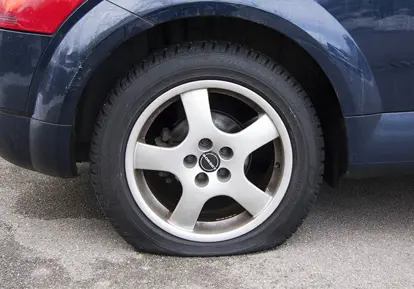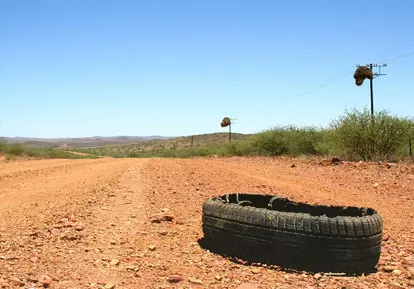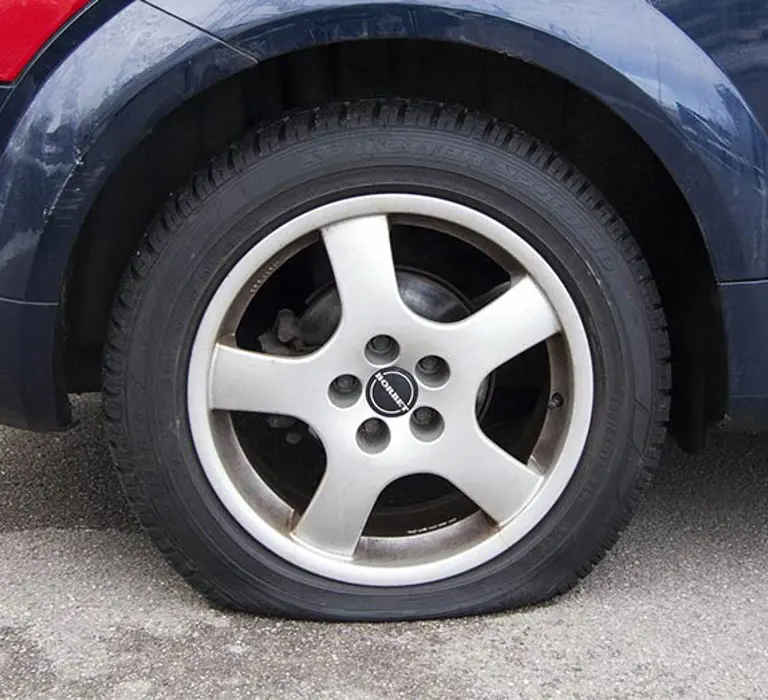Driving on a flat or punctured tyre is a situation many UK motorists face, but few know the safe limits. Continuing to drive with no air pressure can damage the wheel, increase repair costs, and even put you at risk on the road. This guide explains how far you can drive on a flat tyre, the dangers involved, and the options available for drivers.
What Happens If You Drive on a Flat Tyre?
When a tyre loses all or most of its air pressure, the sidewalls collapse and the rubber is forced to take the full weight of the car. Even driving at low speeds can:
-
Damage the wheel rim beyond repair
-
Affect braking distance and steering response
-
Put extra pressure on suspension and alignment
-
Increase the chance of a full blowout
If you’re leasing a vehicle through a provider such as All Car Leasing, tyre damage from driving on a flat may not be covered under your contract, leading to unexpected costs.

How Far Can You Drive on a Flat Tyre?
For a standard tyre, it’s recommended not to drive at all once it’s fully flat. If you absolutely need to move the car, keep it under a few hundred yards at very low speeds — just enough to reach a safe stopping point. Beyond this, you risk destroying the tyre and rim.
Can You Drive With Run-Flat Tyres?
Some vehicles are fitted with run-flat tyres, designed to keep you moving even with zero pressure. On average, you can drive:
-
Up to 50 miles
-
At speeds of 50 mph or lower
Run-flat tyres give you enough distance to reach a garage or home safely without needing an immediate roadside repair. However, they should still be replaced or repaired quickly.
Temporary Fixes: Tyre Foam and Sealants
If you don’t have run-flat tyres, emergency repair kits or tyre foam can provide a short-term solution. These sealants usually allow:
-
Travel for 5–10 miles
-
Speeds of up to 30 mph
This is only intended to get you to a nearby garage, not for long-distance driving.

Safety First: What to Do If You Have a Flat Tyre
-
Pull over to a safe location as soon as possible
-
Turn on hazard lights and use a warning triangle if available
-
Check if you have a spare tyre or repair kit
-
Contact roadside assistance if you cannot resolve the issue safely
For drivers using a personal car lease or business car lease, it’s worth checking whether breakdown cover or tyre protection is included in your agreement.
Key Takeaway
Driving on a flat tyre should always be avoided where possible. Unless your car is fitted with run-flats or you use an emergency foam kit, you should only move the car a very short distance to reach a safe place. For lease customers, avoiding tyre and rim damage helps prevent costly repair charges when returning the vehicle.
If you’re interested in flexible options that can include tyres, insurance, and maintenance, explore our latest car leasing options.
FAQs on Driving With a Flat Tyre
It’s possible, but not recommended. Even 1 mile can cause rim damage and make the tyre irreparable.
If it’s losing air slowly, you might drive a short distance, but it’s safer to stop and repair immediately.
A fully flat tyre should not be driven on-even for a few minutes. Driving without air pressure quickly destroys the tyre’s structure.
Most leasing companies treat tyre damage as driver responsibility, unless you’ve added a maintenance or tyre package to your lease.
